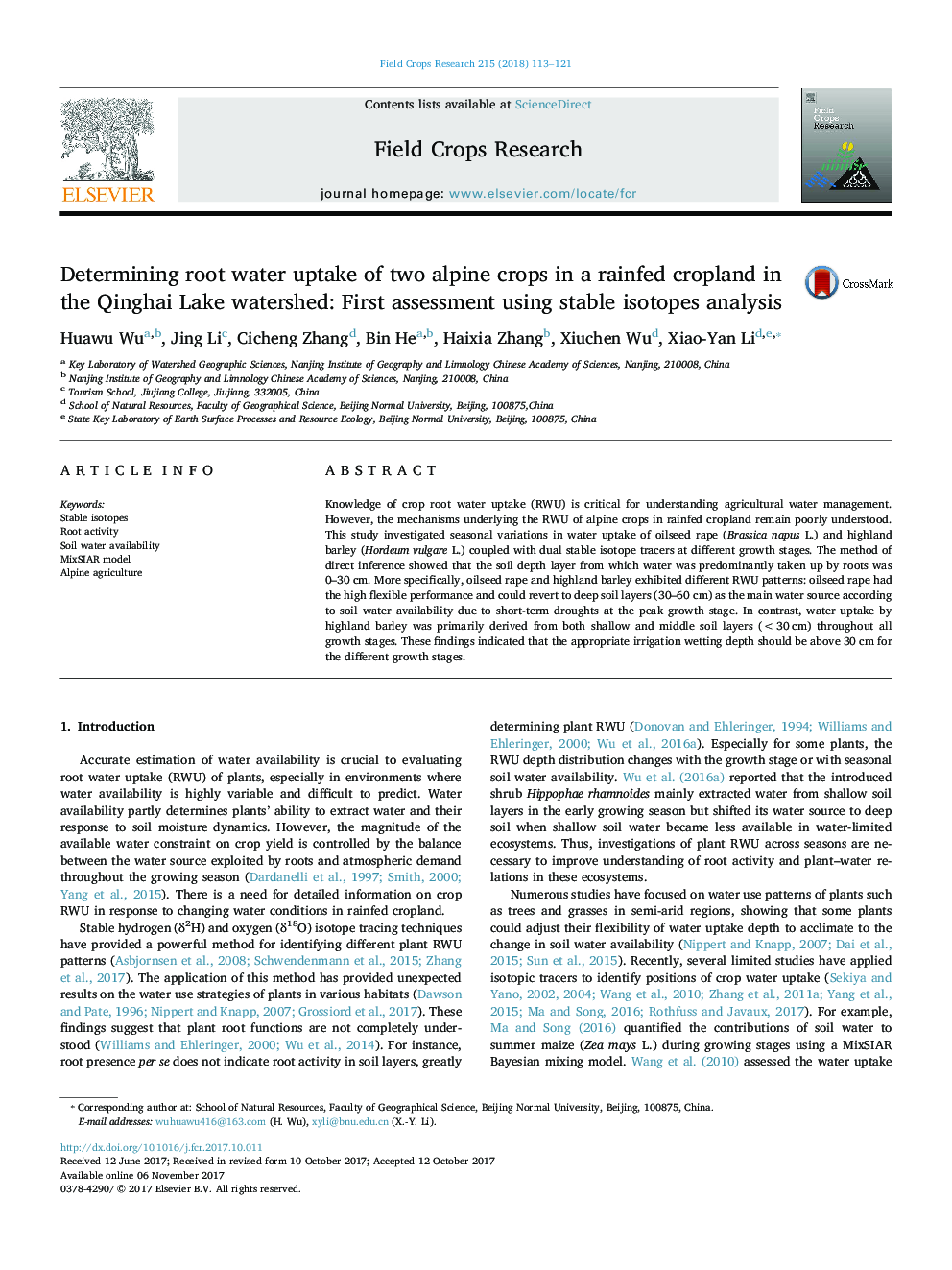| Article ID | Journal | Published Year | Pages | File Type |
|---|---|---|---|---|
| 8879455 | Field Crops Research | 2018 | 9 Pages |
Abstract
Knowledge of crop root water uptake (RWU) is critical for understanding agricultural water management. However, the mechanisms underlying the RWU of alpine crops in rainfed cropland remain poorly understood. This study investigated seasonal variations in water uptake of oilseed rape (Brassica napus L.) and highland barley (Hordeum vulgare L.) coupled with dual stable isotope tracers at different growth stages. The method of direct inference showed that the soil depth layer from which water was predominantly taken up by roots was 0-30Â cm. More specifically, oilseed rape and highland barley exhibited different RWU patterns: oilseed rape had the high flexible performance and could revert to deep soil layers (30-60Â cm) as the main water source according to soil water availability due to short-term droughts at the peak growth stage. In contrast, water uptake by highland barley was primarily derived from both shallow and middle soil layers (<30Â cm) throughout all growth stages. These findings indicated that the appropriate irrigation wetting depth should be above 30Â cm for the different growth stages.
Related Topics
Life Sciences
Agricultural and Biological Sciences
Agronomy and Crop Science
Authors
Huawu Wu, Jing Li, Cicheng Zhang, Bin He, Haixia Zhang, Xiuchen Wu, Xiao-Yan Li,
